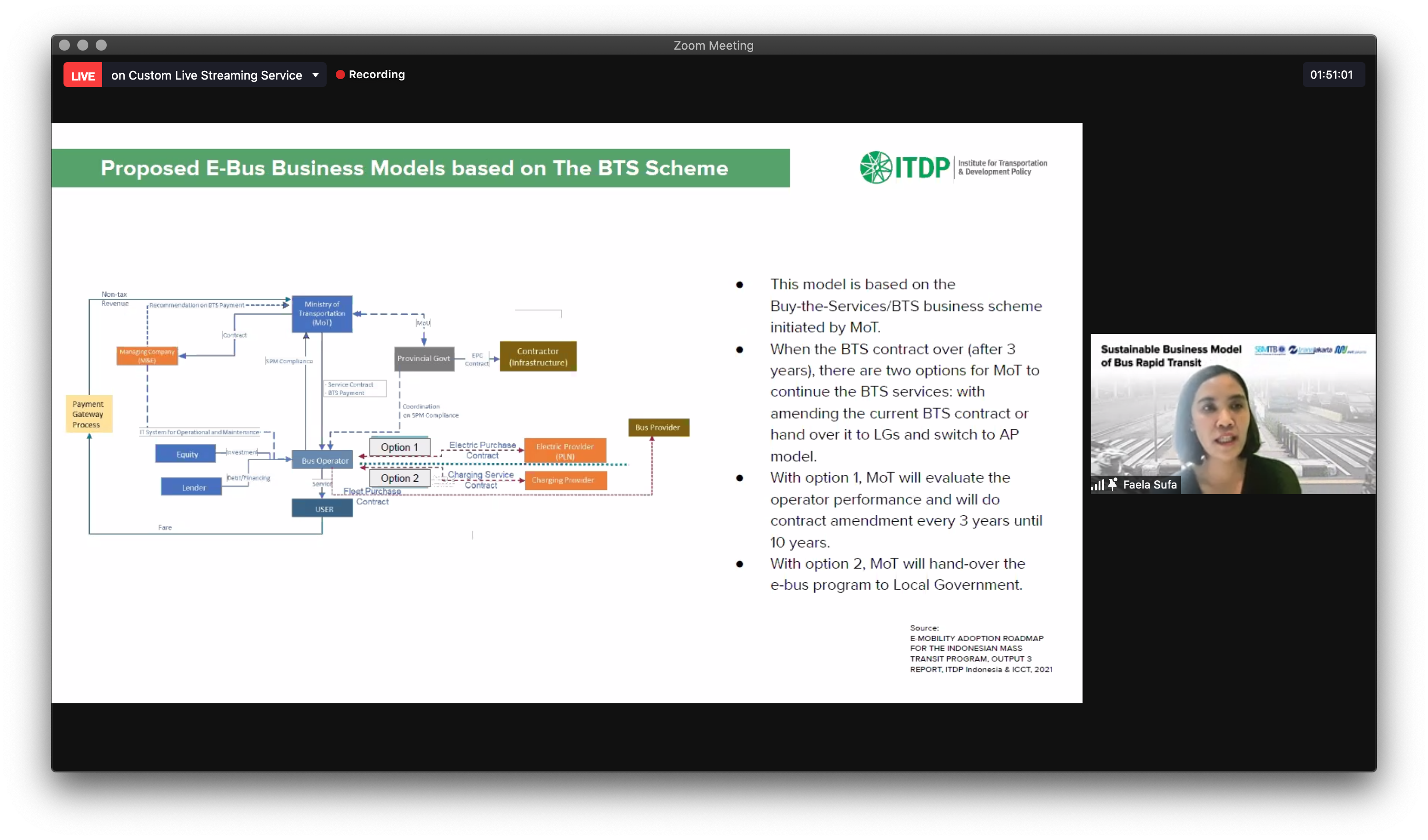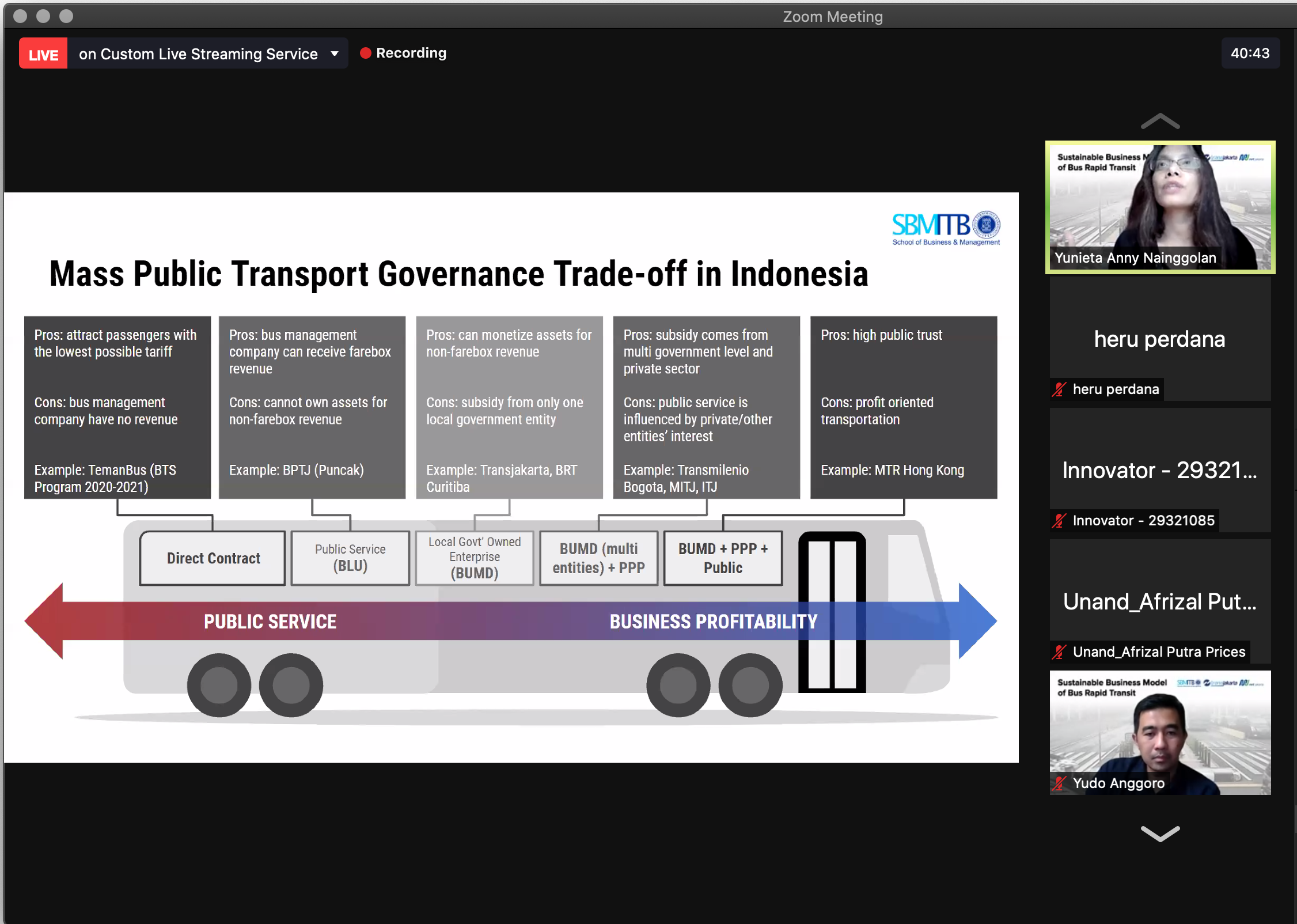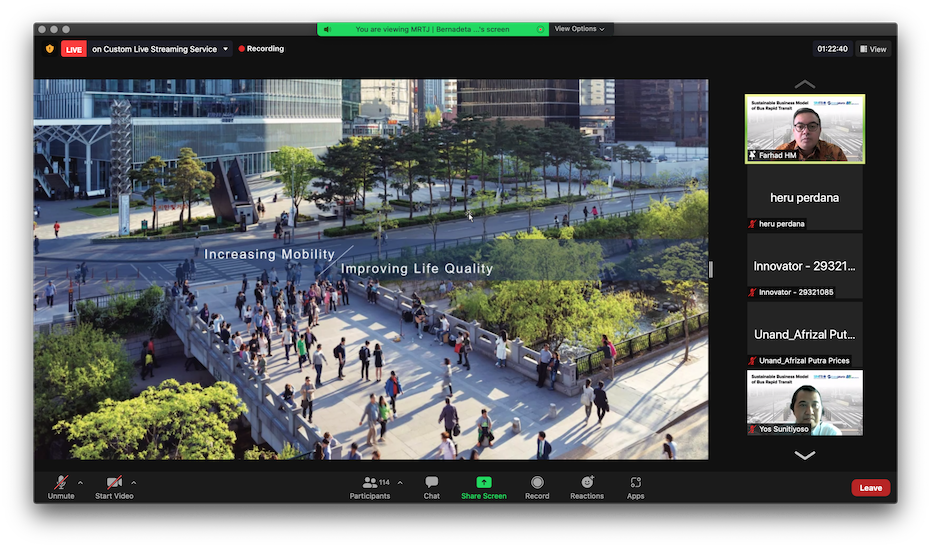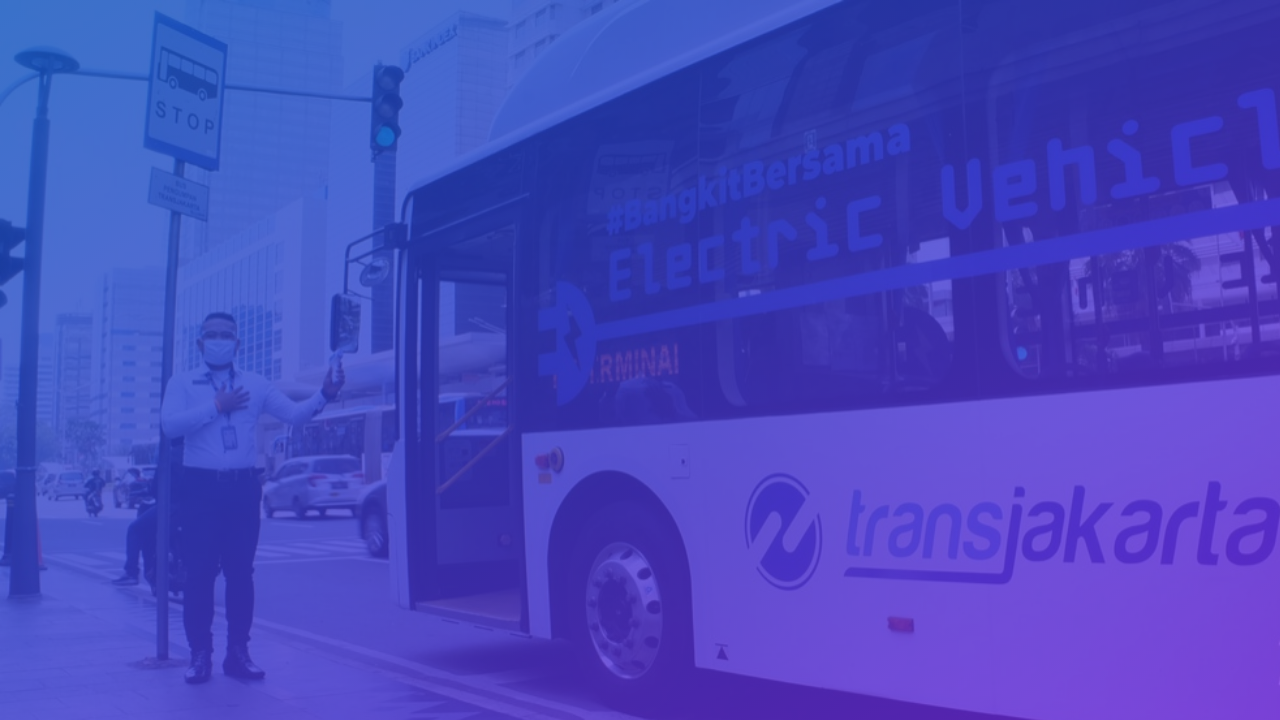Bus Rapid Transit (BRT) is one of the government’s efforts in improving public transportation. The next challenge in managing BRT is establishing a sustainable business model.
 In collaboration with MRT Jakarta, the School of Business and Management ITB held a public discussion to form a sustainable business model for BRT on Thursday (30/9/2021). SBM ITB invited seven experts from several institutions, including the Head of DMSN Research Group SBM ITB, Dr. Yos Sunitiyoso, Director of Engineering and Facilities of Transjakarta, Yoga Adiwinato, and the Vice Dean of Resources of SAPPK ITB, Dr. Puspita Dirgahayani. This public discussion aims to gather information and inputs regarding the development of the business model for BRT, including how to generate farebox and non-farebox revenue by learning from other companies establishing PRT, such as Transjakarta, MRT Jakarta, and MTR Hongkong.
In collaboration with MRT Jakarta, the School of Business and Management ITB held a public discussion to form a sustainable business model for BRT on Thursday (30/9/2021). SBM ITB invited seven experts from several institutions, including the Head of DMSN Research Group SBM ITB, Dr. Yos Sunitiyoso, Director of Engineering and Facilities of Transjakarta, Yoga Adiwinato, and the Vice Dean of Resources of SAPPK ITB, Dr. Puspita Dirgahayani. This public discussion aims to gather information and inputs regarding the development of the business model for BRT, including how to generate farebox and non-farebox revenue by learning from other companies establishing PRT, such as Transjakarta, MRT Jakarta, and MTR Hongkong.
 The Director of MBA ITB Bandung campus, Dr. Yunieta Anny Nainggolan, kicked off the discussion by presenting the research highlights evaluating the current implementation of public transport provision, mainly the Buy the Service (BTS/Teman Bus) system on behalf of the research team. Yunieta also benchmarked with other public transportation models, such as MRT Jakarta and Bogota’s business models, on how they generate revenue.
The Director of MBA ITB Bandung campus, Dr. Yunieta Anny Nainggolan, kicked off the discussion by presenting the research highlights evaluating the current implementation of public transport provision, mainly the Buy the Service (BTS/Teman Bus) system on behalf of the research team. Yunieta also benchmarked with other public transportation models, such as MRT Jakarta and Bogota’s business models, on how they generate revenue.
“It is the public transport’s dilemma, whether to strictly serving the public with the lowest tariff or taking the opportunity for the extra revenue,” said Yunieta.
Faela Sufa, the Southeast Asia Director of the Institute for Transportation & Development Policy, also gave a presentation on several business models of the public transportation systems in Indonesia and other countries while touching on the topic of electric busses. Faela pointed out the cons of the Buy the Service (BTS) concept, noting that it lacks commitment from the government as the three-years contract is too short, making investors reluctant to join, and the fare collection scheme is still unclear. She also presented three proposed business models for the BRT, mikrolet, and e-bus.
Morris Cheung, the Former President of MTR Academy Hong Kong, also talked about this topic in the context of Hongkong MTR that uses the “Rail+Property” business model and how it leads to a win-win-win situation for every party involved, including the government and society. Public transportation expansion can be a catalyst for urban regeneration, new urban lifestyles, and economic growth. There is no single solution that will operate in all regions in terms of BRT’s economic model and small city applicability.
 “The government must identify and recognize the local situation; as indicated in the research results, there is an area that is more tariff sensitive, a region that is ready to pay more to minimize travel time, and design business models appropriately. For example, in low-demand areas, the government could provide more assistance, but in high-demand areas, PPP or profit-maximizing projects may be undertaken,” added Morris.
“The government must identify and recognize the local situation; as indicated in the research results, there is an area that is more tariff sensitive, a region that is ready to pay more to minimize travel time, and design business models appropriately. For example, in low-demand areas, the government could provide more assistance, but in high-demand areas, PPP or profit-maximizing projects may be undertaken,” added Morris.
The model should also utilize non-farebox revenue, such as developing advertisements, commercial business, etc. Lastly, national and local governments should synergize in planning and provision the public transport system and supporting transit facilities towards BRT-based Transit-Oriented Development of the city.
Written by Student Reporter (Janitra Nur Aryani, Management 2023)




